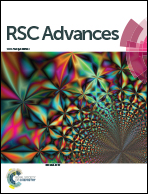A single-chain model for active gels I: active dumbbell model
Abstract
We have developed a single-chain theory to describe the dynamics of active gels. Active gels are networks of semiflexible polymer filaments driven by motor proteins that convert chemical energy from the hydrolysis of adenosine triphosphate to mechanical work and motion. In active gels molecular motors create active cross-links between the semiflexible filaments. We model the semiflexible filaments as bead-spring chains; the active interactions between filaments are accounted for using a mean-field approach, in which filaments have prescribed probabilities to undergo a transition from one motor attachment state into the other depending on the state of the probe filament. The level of description of the model includes the change in the end-to-end distance of the filaments, the attachment state of the filaments, and the motor-generated forces, as stochastic state variables which evolve according to a proposed differential Chapman–Kolmogorov equation. The motor-generated forces are drawn from a stationary distribution of motor stall forces that can be measured experimentally. The general formulation of the model allows accounting for physics that is not possible, or not practical, to include in available models that have been postulated on coarser levels of description. However, in this introductory manuscript, we make several assumptions to simplify the mathematics and to obtain analytical results, from which insight into the microscopic mechanisms underlying the dynamics of active gels can be gained. We treat the filaments as one-dimensional dumbbells, approximate the elasticity of the semiflexible filaments with a Hookean spring law, and assume that the transition rates are independent of the tension in the filaments. We show that even in this simplified form, the model can predict the buckling of individual filaments that is thought to be the underlying mechanism in the self-contraction of non-sarcomeric actin–myosin bundles [Lenz et al., Phys. Rev. Lett., 2012, 108, 238107]. The active dumbbell model can also explain the violation of the fluctuation–dissipation theorem observed in microrheology experiments on active gels [Mizuno et al., Science, 2007, 315, 370–373].


 Please wait while we load your content...
Please wait while we load your content...